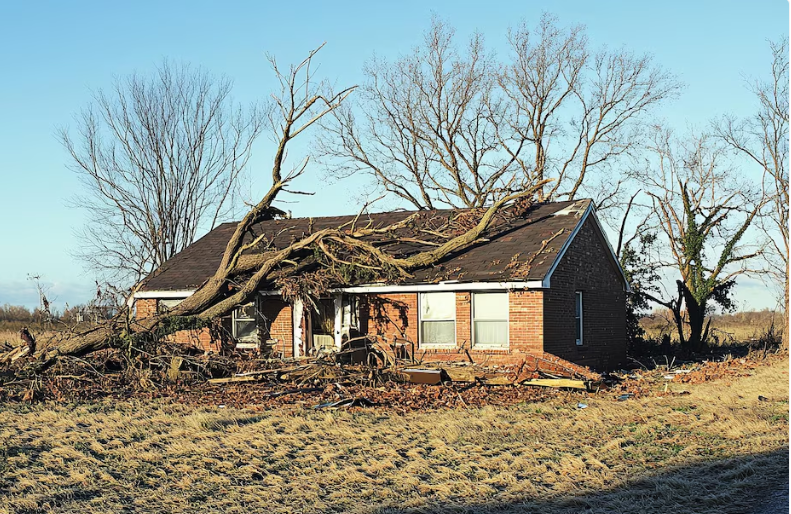Wind-Related Damage
Wind is a primary component of storm damage covered by most insurance policies. Qualifying wind damage includes torn or missing roof shingles, damaged soffits and fascia, and compromised roof structures. Falling objects like tree limbs or debris propelled by wind that damage your property typically qualify as covered storm damage. Wind-driven rain entering through openings created by storm forces generally qualifies, though pre-existing openings may lead to claim denials. Most policies cover structural impacts from high winds, including damage to siding, windows, gutters, and outdoor fixtures when directly caused by storm-level winds.
Water and Precipitation Effects
Certain water damage qualifies as covered storm damage, though with important distinctions. Rain entering through storm-created openings in the building envelope generally qualifies. Roof leaks occurring during storms from direct storm impact typically receive coverage. However, standard policies exclude flooding (rising water from ground sources), which requires separate flood insurance. Snow and ice damage, including roof collapse from excessive weight and ice dam formation, usually qualifies as storm damage in regions where such weather is common.
Lightning and Electrical Damage
Lightning strikes represent a clearly defined form of storm damage. Direct strikes to your home causing fire, roof damage, or structural harm qualify under most policies. Electrical surges from nearby lightning strikes affecting appliances, electronics, and home systems typically qualify, though some policies limit coverage amounts for electronics. Power outages resulting directly from storms may qualify for limited coverage for consequences like food spoilage or basement flooding from disabled sump pumps, though specific endorsements are often required for full protection.
Hail Impact
Hail damage constitutes a distinct category of covered storm damage. Qualifying hail damage includes impacts to roofing materials (visible as bruising, granule loss, or cracking), dented gutters and downspouts, damaged siding or window frames, and broken glass. Vehicle damage from hail is typically covered under comprehensive auto insurance rather than homeowners policies. Insurance companies often assess hail damage based on measurable strike density and size rather than merely the presence of hail during a storm.


